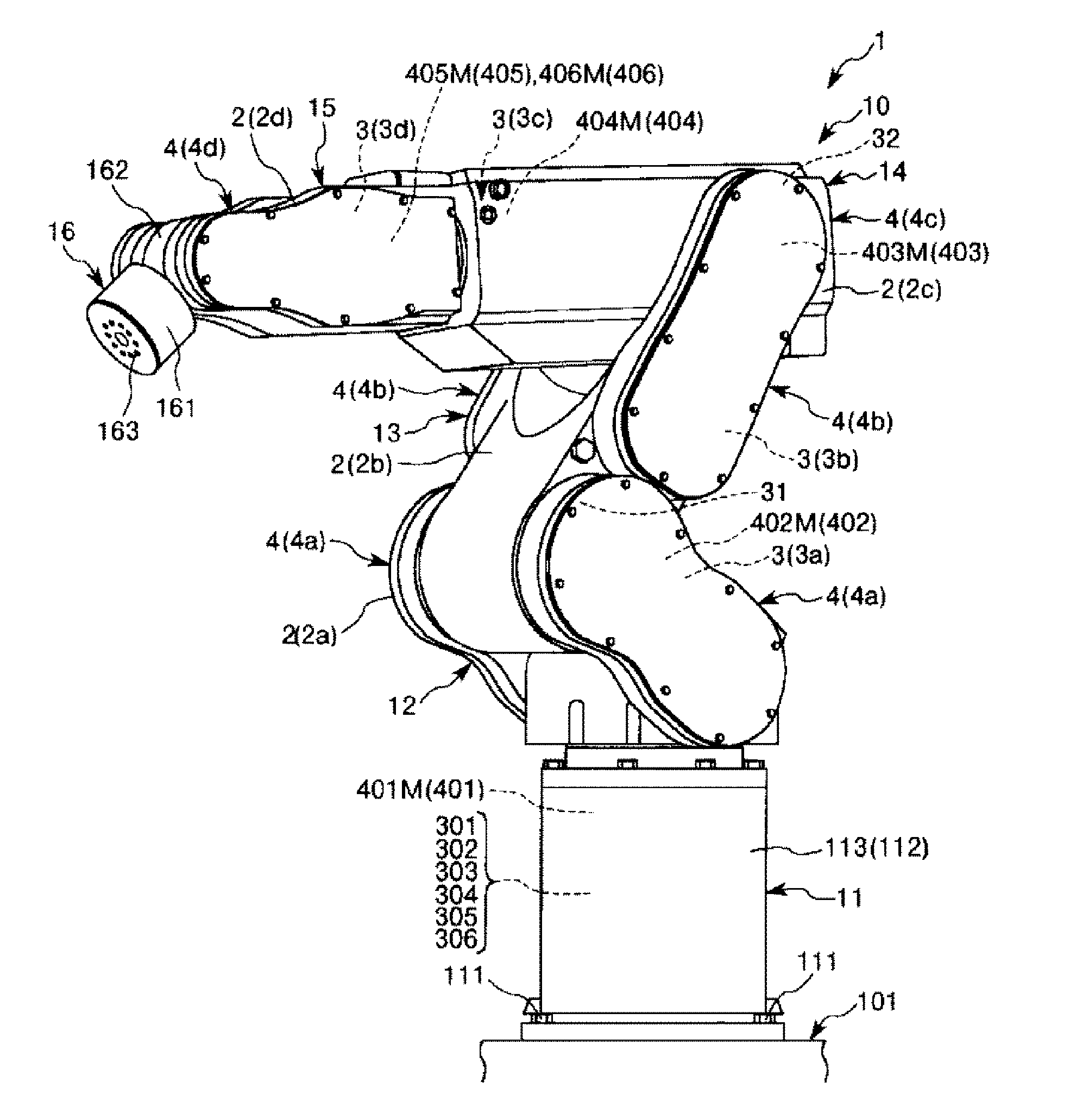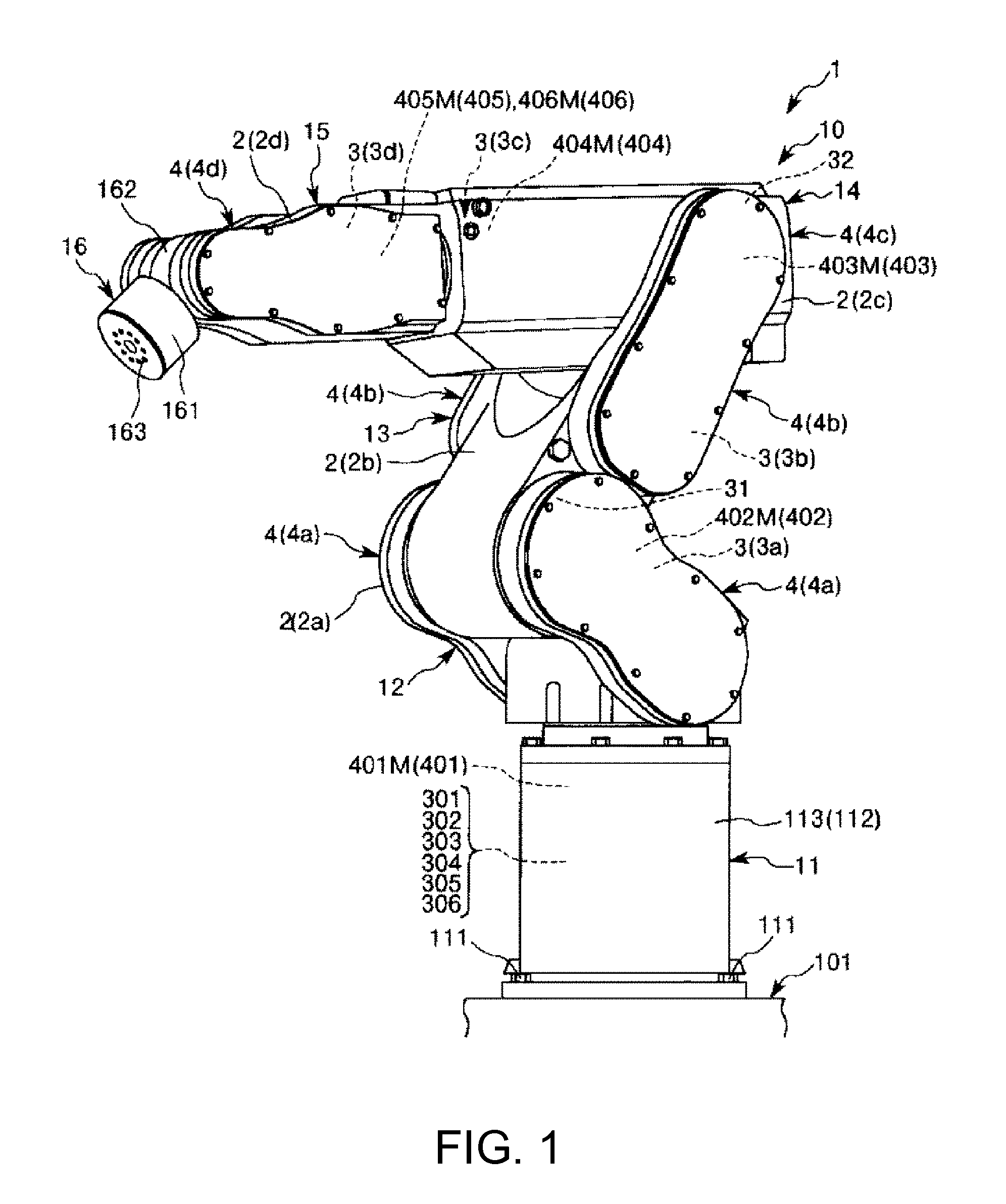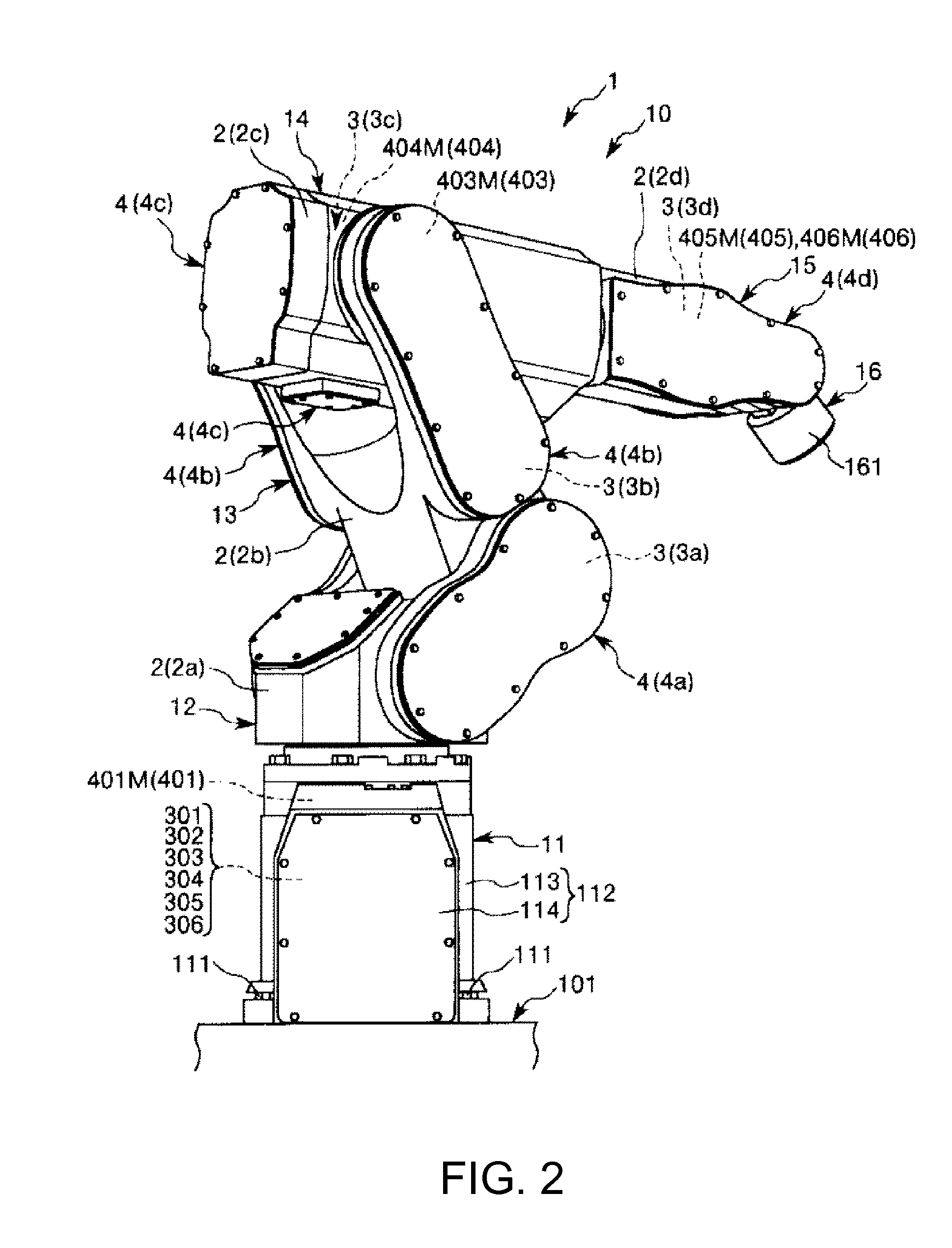Robot
a robot and robot technology, applied in the field of robots, can solve the problems of slow response speed, easy generation of vibration in the arms, and huge amount of calculations, and achieve the effects of improving response speed in the control of the robot, and reducing the amount of calculations
- Summary
- Abstract
- Description
- Claims
- Application Information
AI Technical Summary
Benefits of technology
Problems solved by technology
Method used
Image
Examples
first embodiment
[0077]FIG. 1 is the perspective view when a first embodiment of a robot is viewed from the front side. FIG. 2 is a perspective view when the robot shown in FIG. 1 is viewed from the back side. FIGS. 3 and 4 are schematic views of the robot shown in FIG. 1, respectively. FIG. 5 is a block diagram of portions of the robot shown in FIG. 1, and FIGS. 6 to 11 are block diagrams of portions of the robot shown in FIG. 1, respectively.
[0078]In addition, in the following, for convenience of description, the upper side in FIGS. 1 to 4 is referred to as “upper” or “upside” and the lower side is referred to as “lower” or “downside”. Additionally, the base side in FIGS. 1 to 4 is referred to as a “base end”, and the opposite side is referred to as a “tip”. Additionally, the rotation axes O2 and O3 are shown in an exaggerated manner in FIG. 4, respectively. Additionally, inertia sensors 31 and 32 are shown outside arms 12 and 13 in FIG. 4, respectively, in order to clarify the presence of the sen...
second embodiment
[0156]FIG. 12 is a schematic view showing a second embodiment of a robot. FIG. 13 is a block diagram of portions of the robot shown in FIG. 12.
[0157]In addition, in the following, for convenience of description, the upper side in FIG. 12 is referred to as “upper” and “upside” and the lower side is referred to as “lower” and “downside”. Additionally, the base side in FIG. 12 is referred to as a “base end”, and the opposite side is referred to as a “tip”. Additionally, the rotation axes O2 and O3 are shown in an exaggerated manner in FIG. 12, respectively. Additionally, inertia sensors 31, 32, and 33 are shown outside arms 12, 13, 14 in FIG. 12, respectively, in order to clarify the presence of the sensors.
[0158]The second embodiment will be described below mainly regarding the differences from the aforementioned first embodiment, and the description of the same matters will be omitted.
[0159]As shown in FIG. 12, in the robot 1 of the second embodiment, the third inertia sensor 33 is i...
third embodiment
[0181]FIG. 14 is a block diagram showing portions of a third embodiment of a robot.
[0182]The third embodiment will be described below mainly regarding differences from the aforementioned second embodiment, and the description of the same matters will be omitted.
[0183]As shown in FIG. 14, in the robot 1 of the third embodiment, the second drive source controller 202 of the control device 20 is different from that of the second embodiment. The second drive source controller 202 will be described below.
[0184]As shown in FIG. 14, the second drive source controller 202 has an adder-subtractor 629 instead of the subtractor 577. In addition to a position command Pc of the second drive source 402, detection signals are input from the second angle sensor 412 and the third inertia sensor 33, respectively, to the second drive source controller 202. Additionally, an angular velocity ωA3m of the third arm 14 around the rotation axis O3 is input from the third drive source controller 203 to the s...
PUM
 Login to View More
Login to View More Abstract
Description
Claims
Application Information
 Login to View More
Login to View More - R&D Engineer
- R&D Manager
- IP Professional
- Industry Leading Data Capabilities
- Powerful AI technology
- Patent DNA Extraction
Browse by: Latest US Patents, China's latest patents, Technical Efficacy Thesaurus, Application Domain, Technology Topic, Popular Technical Reports.
© 2024 PatSnap. All rights reserved.Legal|Privacy policy|Modern Slavery Act Transparency Statement|Sitemap|About US| Contact US: help@patsnap.com










